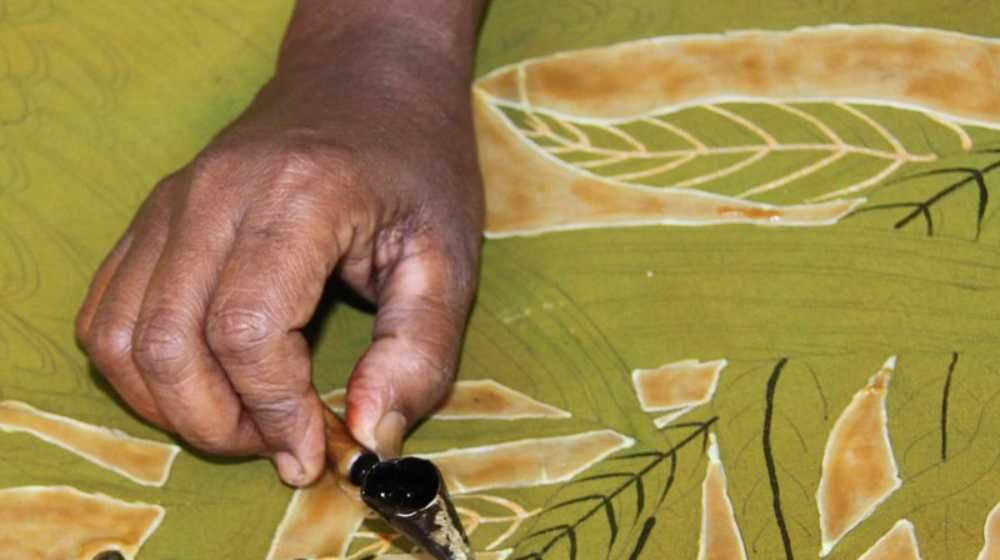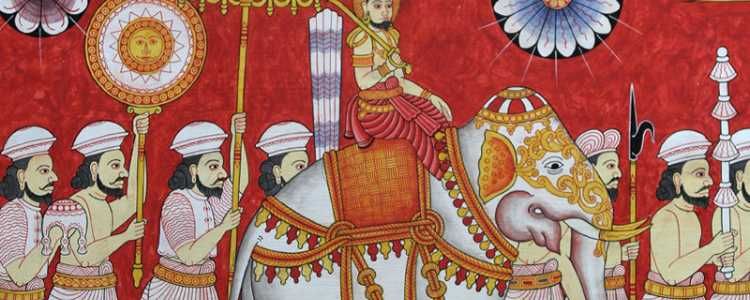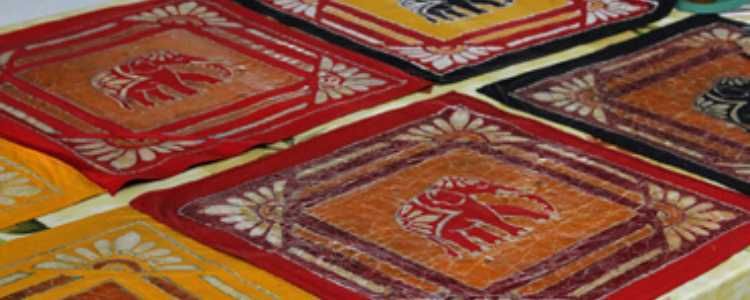
Sri Lanka Batik Industry of Sri Lanka
Originally a Japanese word which meant ‘writing with wax’, batik has come a long way since it was spread across East Asia by Dutch colonial officers. Originated in Indonesia and introduced to Sri Lanka by Dutch at the turn of the 19th century, the batik industry in Sri Lanka has developed into a unique form of textile art exclusive to the country.
Originated as a primary art of fabric dying, Batik has evolved into a vibrant industry of fabric art in Sri Lanka, Malaysia, Indonesia, Japan, Vietnam, Philippines, Thailand and Singapore with their own identity, methodology and design. In its purest form batik is a method of decorating a piece of cloth by creating pattern on it with wax and colouring rest of the piece of cloth, creating a vibrant mosaic with coloured and uncoloured areas. Painstaking and time consuming, Batik was originally a hobby of the elitists in Kandyan court. The aristocratic ladies of the central kingdom were skilled practitioners of batik and soon the skills of batik were introduced to the artesian classes, who developed tapestry, regional flags and traditional clothes of the aristocrats with batik fabrics.

However batik industry was limited to a cottage industry until the late 1970s, when a growing tourism culture in Sri Lanka gave a sudden boom to many local handicrafts including batik. Although the growing interest of tourists in batik was sufficient to keep the art from alive as a cottage industry in the nooks and corners of Sri Lanka, it is the government backing provided through the National Crafts Council, Sri Lanka Handicrafts Board, Institute of Textiles & Apparel (SLITA) and Sri Lanka Export Development Board which encouraged a generation of batik artists to create and experiment with new form and techniques in batik, giving a local flavour to a global tradition. Today Batik textile manufacturing in Sri Lanka is deep rooted into the local culture and many a local artists has embraced it as one of our own, developing unique wax resist and dying techniques to create batik designs that are unique to Sri Lankan batik artists. While Batik arts and fashion were restricted as a merchandise for the foreign tourists and most of the batik sales outlets were limited to tourist based locations and hotels in the coastal zone, the demography of local batik industry has changed largely due to the high involvement of new designers and craft men and women. Just like the times it was first introduced to Sri Lanka, batik has become the realm of village based women, who create beautiful designs on clothes with just dexterity of their hands and pure imagination.

After nearly three hundred years since its Sri Lankan initiation, batik designs are being portrayed heavily in Sri Lankan fashion designs today. Made in silk and cotton, designed by leading fashion houses and produced by local batik producers in Sri Lanka; batik clothes fetch extremely high prices in local and global markets. Local interior designers are also maximizing the batik’s use of vibrant colours in producing unique lamp shades, linen, tapestry and upholstery to court the international attention. Under the direction of a group of innovative young designers, Sri Lankan batik designs are being rescued from the clutch of traditional clothing and summer wear and are being moulded into designs worthy of world’s leading catwalks portraying traditional mosaics of Sri Lanka.